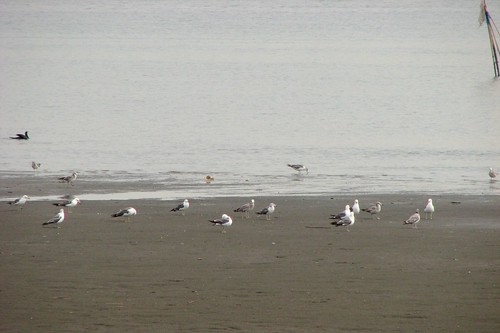April 21, 2009
Japanese Gov't Drafts Strategy to Better Protect Marine Environment
Keywords: Ecosystems / Biodiversity Government
The Ministry of the Environment in Japan (MOE) released a draft report on the schemes to better maintain natural parks on December 19, 2008, and invited public comments. Compiled by the Nature Conservation Committee of the Central Environment Council, the report suggests measures to be taken to protect marine habitats, including the designation of protected zones spanning near-shore to onshore habitats, and restrictions on recreational uses.
Of nation's 430,000 square kilometers of territorial waters, ,national parks and quasi-national parks comprise approximately 17,000 square kilometers, accounting for around 4 percent. Among them, only 37 square kilometers of waters have been designated as marine parks that have limited access or utilization in order to protect marine life. On the other hand, natural parks on land, which cover approximately 14 percent (about 54,000 square kilometers) of the nation's land, have nearly 34,000 square kilometers of special or special protection zones, illustrating the need for enhanced protection for marine habitats.
The report proposed that coastal areas in shallow waters, such as tidal zones, seaweed and seagrass beds, coral reefs and rocky ridges, which cover approximately 120,000 square kilometers across the nation, should be designated and integrally protected as ecosystems connected to the terrestrial environment. Also, to avoid environmental impact caused by excess recreational demand for marine areas, the report calls for the introduction of restricted access for specific activities and restricting motor boats, thus introducing systems already put in place for the national parks and quasi-national parks on land.
In line with efforts aiming at biodiversity conservation, a policy set out in the Third National Biodiversity Strategy of Japan that was approved by the cabinet in November 2007, the MOE is endeavoring to implement measures necessary to better maintain national parks. Moreover, upon the international agreement at the 8th Conference of the Parties of the Convention on the Biological Diversity (2006), which calls for at least 10 percent of the world's oceans and coastal waters to be effectively conserved, the MOE will further improve its strategy to conserve and better manage shallow water ecosystems.
- MOE Conditionally Approves Wind Turbines in National Parks (Related JFS article)
http://www.japanfs.org/en/pages/025515.html
- Towards Biodiversity Conservation in Japan (August 2008)
http://www.japanfs.org/en/mailmagazine/newsletter/pages/027854.html
Posted: 2009/04/21 06:00:15 AM
Related
"JFS Newsletter"
- 'What Are the Roles of Zoos Today?' - Interview with Director of the Popular Asahiyama Zoo
- Nishiawakura's Initiative for 100% Energy Self-Sufficiency, and a Municipal ICO Scheme
- 15-Year Integrated Forest Environment Education in Shimokawa, Hokkaido to Support Sustainable Forest Management
- Fifth Contest to Award Excellent Environmental and Social Practices by Junior High, High School Students
- Increase Revenues without Increasing Catches -- How the Sustainable Sakura Shrimp Fishery in Suruga Bay Does It



